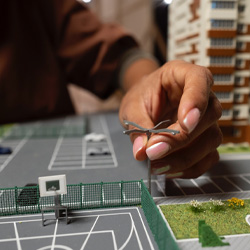Introduction
Speed bumps, those simple raised areas on roads, play a pivotal role in urban planning. Serving as silent guardians, they ensure safer passages for pedestrians, make roads more cyclist-friendly, and indirectly aid local businesses by slowing down potential customers enough to notice storefronts. However, what seems like a straightforward component of our daily commute is, in reality, a result of intricate planning and design. Designing, approving, and implementing a speed bump is not just about laying some asphalt; it involves a series of thoughtful steps to ensure it serves its purpose effectively without causing undue inconvenience. In this article, we embark on a journey to explore the complete lifecycle of a speed bump in urban environments. From understanding its foundational design principles to navigating the bureaucracy of its implementation, from witnessing its tangible benefits to grappling with its occasional challenges, we aim to shed light on every facet of this ubiquitous traffic calming measure. Through this exploration, we aspire to provide readers with a comprehensive view of the significance, intricacies, and impact of speed bumps in shaping safer and more livable urban spaces.
The Design Phase
When it comes to urban planning, speed bumps are an integral part of keeping the roads safe. The design phase of a speed bump is a crucial step in the lifecycle of its implementation. It’s important to consider the basic requirements of the speed bump, as well as the site selection for its location and the associated engineering design and cost for the project.
When designing a speed bump, engineers must consider a variety of criteria, such as the size and shape of the bump, its height, the type of material it will be made from, and its surface texture. Additionally, the site selection for the speed bump must ensure that it does not interfere with other infrastructure or cause unnecessary disruption to local businesses. Finally, the engineering design and cost for the speed bump must be taken into consideration, as this will determine the overall success of the project.
The Implementation Phase
Once the design phase is complete, the construction of the speed bump can begin. This involves making sure that the area is marked off and that the necessary materials are present. The installation of the speed bump will depend on the design chosen. Once the speed bump is in place, appropriate signage should be added to make sure that drivers are aware of the speed bump. After the installation of the speed bump is complete, there will be a series of final inspections and approvals before the speed bump is officially complete.
The Maintenance Phase
Once a speed bump is successfully implemented in an urban planning project, it is important to ensure that it is regularly maintained to ensure the safety and efficiency of the speed bump. Regular upkeep is the most effective way to ensure that the speed bump continues to meet safety requirements. As part of the maintenance phase, local authorities and planners should determine the necessary repairs that the speed bump needs and schedule any preventative maintenance. This includes ensuring the speed bump remains compliant with any applicable safety regulations. Furthermore, regular evaluations should be conducted to make sure the speed bump is still necessary and is still functioning properly.
Benefits of Speed Bumps
Speed bumps are a great way to improve safety in our urban areas. By creating a bump in the road, it can provide drivers with an obvious warning to slow down. This can also help reduce excessive speeds in areas where speed limits might be a bit higher than average.
In addition, speed bumps can help improve traffic flow in busy areas by helping to control the speed of vehicles and ensuring that people are not just trying to pass each other in the same lane. This can help reduce congestion, which can be a huge issue in urban areas.
Finally, speed bumps can help promote a safer environment for pedestrians and cyclists by helping to keep drivers from going too fast in busy areas. This can help create a much safer atmosphere, which is always a priority in any urban environment.
Challenges of Speed Bumps
For all the benefits that speed bumps provide in urban planning, they can also present a few challenges. For example, businesses located near the speed bumps may suffer from disruption due to the construction process and the noise that may be created. Additionally, speed bumps may have an effect on the environment, as they can lead to increased air and noise pollution due to vehicles having to slow down and speed up. Finally, the speed bumps can also cause increased wear and tear on vehicles, particularly for those that are speeding over them. This can be a costly problem for vehicle owners.
Conclusion
The lifecycle of a speed bump in urban planning is an intricate process, from the design phase all the way to the implementation, maintenance, and benefits of having one in an urban area. Speed bumps are essential for providing increased safety for pedestrians, cyclists, and other vehicles. They can also reduce vehicle speed, improve traffic flow, and create a sense of community. However, speed bumps can also be disruptive to local businesses, cause increased environmental pollution, and put extra wear and tear on vehicles.
Overall, speed bumps provide many advantages for urban areas, as they can help to slow down vehicles, improve safety, and create a sense of community. They also come with a few challenges, but these can be mitigated with careful planning and proper maintenance. Ultimately, speed bumps are an important part of any urban planning process.


